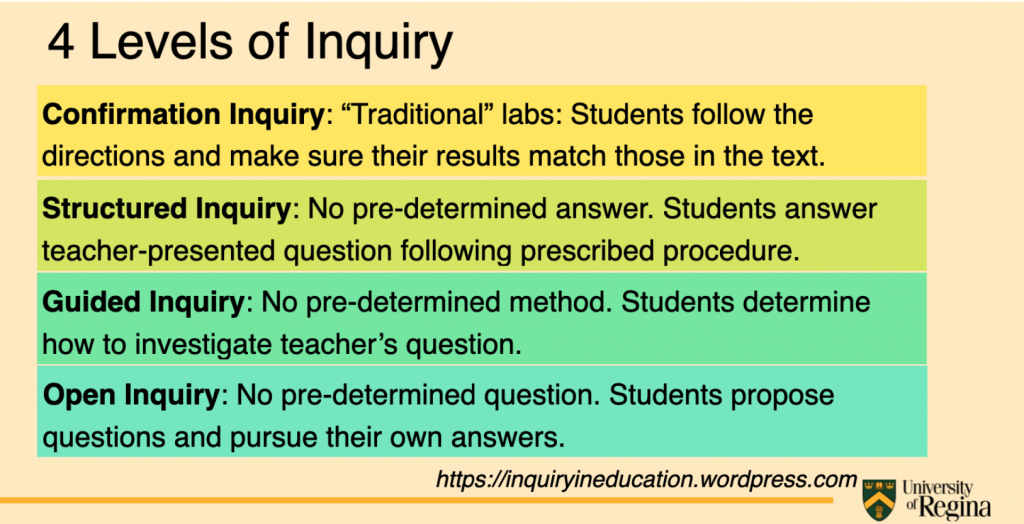Interactive – Interactive strategy is a great way for students to be actively involved with their learning process; Activities or instructions with this strategy usually involves student-student interaction, student-teacher interaction, using audio, videos, visuals, and lastly, hands-on demonstrations and exercises.
The interactive teaching strategy is important because it plays a role in students’ different learning abilities. It allows for various learning styles to be utilized, we must also keep in mind that when planning these activities to be inclusive and also implement the students interest for more engagement. It gives more opportunity for students to build their known or learning knowledge off of the teacher and each other in positive ways. Finally it helps the teacher to gain insight into individual learning requirements of each student.
Inquiry Driven – Inquiry for discovery allows for students to explore their environment in order to learn and expand their knowledge. It encourages students to answer the questions given to them using discovery and exploration.
This helps students to use the best learning style for differing abilities in a way to learn and gain new knowledge. It hold students accountable for themselves and allows them to share their discoverings with their peers and teacher.

Efficacy – Efficacy is a need when it comes to students level of motivation. Making an effort to encourage self efficacy can have a lasting effect on students success. Efficacy can be achieved through making a common goal either student or teacher lead. The students will then continue learning through their own methods in order to achieve this one common goal.
This is an effective effort because it allows even the unmotivated students to create and achieve a goal. These goals allow for students and teachers to be able to measure growth within themselves, and their learning.
Metacognitive Processes – There are a couple strategies when it comes to metacognitive processes such as read alouds, organization and modelling. These processes allow for students to develop their own way of learning through learning. Students will develop different tools from the teacher, peers, and themselves that best fit their own learning style.
Through personal assessment such as journals and logs the teacher is able to develop instruction and teaching methods that best work with and for the students learning abilities and needs.
Cooperative Learning – cooperative learning can be used in all subject areas and grade levels. It involves supportive and cooperative learning between students. This learning style encourages students work together and share learning styles with one another.
Independent Learning – Independent study is student based. It encourages student responsibility and accountability when it comes to completing assignments and tasks. Teachers can monitor and mentor students, by offering ample opportunities to build the skills needed for independent study.
This learning style is beneficial for students who thrive independently and for students to utilize their own learning style and method.
Experiential – Experiential learning is a student centred approach. The teacher can develop a lesson that revolves around student interest and needs. Teachers will observe the students differing learning styles and interests in order to create a lesson or unit plan that best fits the classroom environment.
This learning strategy is effective for focusing on student process instead of the finished product. this will help students develop their knowledge through the learning experience.
Indirect – Indirect is a strategy that is mainly student centred. The role of the teacher is to be a facilitator and monitor to observe what appears to be working for the students and what may need to be modified.
This strategy is effective for active involvement while utilizing differentiation and individual interest. It also creates the possibilities for exploring diverse needs and learning in a positive way.